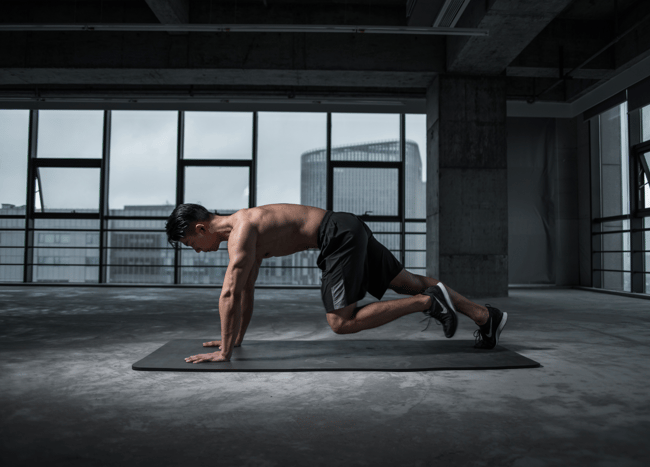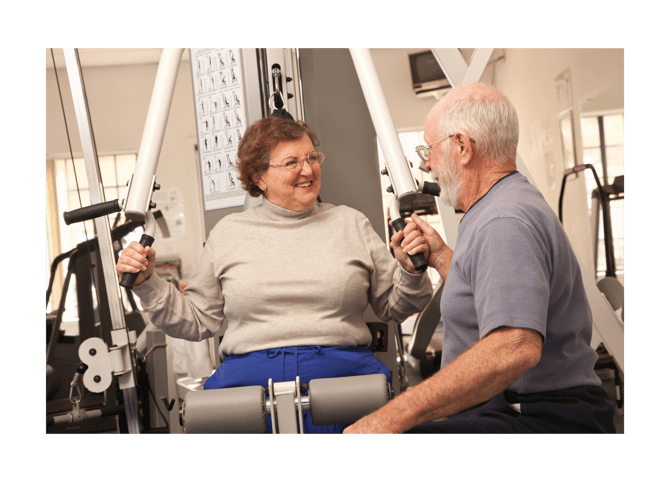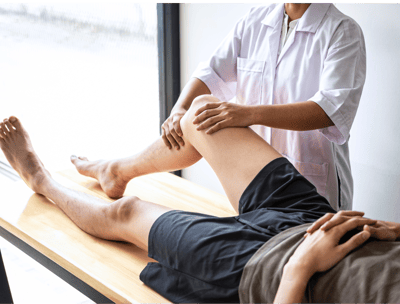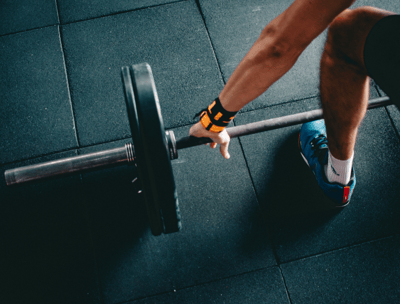The Science
Behind
Blood Flow Restriction (BFR)
The Magic of BFR
BFR training uses a safe mechanism to create a powerful physiological response that accelerates muscle growth, enhances recovery, and boosts endurance.
Studies show that BFR can produce muscle hypertrophy and strength gains comparable to lifting heavy weights at 70–80% of your one-rep max (1RM)—using as little as 20–30% of 1RM. (Loenneke et al., 2012)
Science Meets Simplicity
How does BFR work?
Restrict: Lightweight cuffs restrict blood flow, creating controlled and localized hypoxia (low oxygen levels).
Activate: The muscles adapts by recruiting fast-twitch muscle fibers and increasing lactate production.
Transform: These adaptations lead to muscle growth, improved endurance, and faster recovery by hormonal releases.
The result? Here’s how this impacts the body:
Muscle Activation:
Even at low intensity exercise, the low oxygen levels with BFR causes fast-twitch muscle fibers activation, which are typically activated during high-intensity exercise.
Hormone Boost:
The lack of oxygen and increased effort cause your body to release hormones like growth hormone (GH) and IGF-1. These hormones help repairing and growing muscles faster, similar to the effects of high-intensity exercise. (Takarada et al., 2000).
Improved Blood Flow Over Time:
The human body produces substances like VEGF (a growth factor for blood vessels), which increases the number of small blood vessels (capillaries). This improves blood circulation and oxygen delivery to muscles in the long term.


Improves Functional Outcomes
Enhances functional performance, mobility, and overall strength during rehabilitation by safely recruiting fast-twitch muscle fibers.
Promotes Vascular and Microvascular Health
BFR training improves endothelial function, enhances microvascular blood flow, and supports capillary density, vital for musculoskeletal recovery.
Accelerates Recovery Post-Injury or Surgery
BFR enables faster recovery of muscle mass and strength in post-injury and post-surgery scenarios without stressing healing tissues.Studies confirm faster recovery of functional capacity in rehab patients.
By using low loads (20–40% of 1RM), BFR reduces strain on joints and tendons, making it ideal for patients with musculoskeletal injuries. (Hughes et al., 2017)
Minimizes Joint and Tendon Strain
Proven, safe, and effective: BFR delivers strength and muscle growth with minimal joint stress.
Musculoskeletal Rehabilitation
Muscle Performance


Faster Recovery
BFR stimulates growth hormone and IGF-1 release more effectively than high-load exercise, speeding up muscle repair and reducing downtime (Takarada et al., 2000).
Shorter Sessions
A 15–20 minute BFR session can yield the same benefits as a 60-minute high-intensity workout.
Joint-Friendly
Unlike heavy lifting, which can exacerbate joint pain or injuries, BFR allows for low-load training that’s safer for vulnerable populations, such as the elderly or those recovering from injury.
Lifting at just 20–30% of your one-rep max (1RM) with BFR produces results similar to lifting at 70–80% of 1RM (Loenneke et al., 2012; Abe et al., 2006).
Lower Loads
Fighting with Aging
As individuals age, the loss of muscle mass and function known as sarcopenia leads to:
Increased risk of falls, fractures, and osteoporosis.
Development of chronic diseases like cardiovascular complications and diabetes.
Reduced independence in performing Activities of Daily Living (ADLs).
The decline in muscle mass, strength, and overall quality of life typically begins around the age of 40 (Cruz-Jentoft AJ, 2019).
With the population over the age of 65 in Europe projected to increase by 20% by 2030, maintaining physical function and independence in older adults has become a pressing health priority.
BFR training is uniquely positioned to address these challenges by:


Improved Physical Function
Research, including a systematic review by Cardoso et al. (2019), has shown that BFR improves muscle strength and physical function, regardless of the specific BFR protocol used.
Promoting Independence
BFR enhances the ability to perform ADLs, improving independence and quality of life. (Cunha et al., 2011)
Avoiding Falls, Frailty and Disabilities
Strengthened muscles reduce the risk of falls and enhance mobility. (Lim & Goh, 2022)
BFR Anytime, Anywhere
Whether you’re at home, in the gym, traveling, or even at work, BFR integrates scientific innovation with practical application:
Everyday Fitness
Home:
Use BFR cuffs for effective bodyweight exercises like squats, push-ups, or lunges.
Gym:
Integrate BFR into your existing workout routine to enhance the results with lighter loads.
Outdoor Training:
Take your BFR cuffs to the park and pair them with simple calisthenics like pull-ups, dips, or walking lunges.
Travel Workouts:
Don’t let travel disrupt your fitness routine. Perform exercises like resistance band rows, planks, or seated leg lifts and use BFR.
During Long Flights or Commutes:
Use BFR to maintain the blood circulation and prevent muscle stiffness during extended periods of sitting on long flights.
Increased Caloric Burn:
The hypoxic environment created by BFR stimulates the release of growth hormone (GH) and other metabolic hormones, which may enhance the fat metabolism (Loenneke et al., 2012).
Aging and Longevity:
Activities like walking, light resistance training, or even gardening with BFR help older adults stay active and strong.
The low-intensity nature of BFR makes it accessible for individuals with limited mobility or joint pain.
Office Fitness & Posture and Core Strength:
BFR training is efficient that a 10–15 minute session can deliver results comparable to a full gym workout, making it ideal for busy professionals.
Approaches for BFR Training
The concept of using BFR as a passive strategy was first described in a research paper by Takarada et al. (2000) over 20 years ago.
Since then, BFR has evolved into a versatile training method capable of enhancing muscle hypertrophy, strength, and recovery across various exercise modalities.
To optimize muscle hypertrophy using BFR, several key factors must be considered, such as progressive overload.
Research indicates that BFR programs lasting 6–8 weeks deliver the most effective hypertrophy results. However, significant muscle size increases can occur in as little as 8 days under intensive resistance training protocols (Abe et al. 2005).
Less Time, More Results
Training intensity should progress gradually as strength improves, aligning with principles similar to traditional methods but with significantly reduced mechanical load requirements.
Passive BFR


Key Benefit: Counteracts muscle loss during immobilization (e.g., post-surgery recovery).
Why it works: Passive BFR has been shown to preserve muscle thickness and reduce atrophy, making it ideal for individuals unable to engage in physical activity.




BFR aerobic exercise
Aerobic activities like walking, cycling, or running combined with BFR.
Key Benefit: Simultaneously improves endurance and promotes muscle growth.
Research Highlights: Up to a 5–7% increase in muscle mass has been observed in just 3 weeks of BFR aerobic training (Abe et al. 2006).
Low-intensity resistance training (20–40% 1RM) combined with BFR.
Key Benefit: Produces significant hypertrophy and strength gains without the strain of high-load training.
Research Highlights: BFR resistance training can yield muscle mass improvements of up to 15%, comparable to traditional resistance training.
BFR resistance exercise
Safety!
1. The Need for Precise BFR Control
Challenge:
The correct application of limb occlusion pressure (LOP) is fundamental for the safety and effectiveness of BFR.
Yet, many BFR devices lack precise LOP measurement systems, leading to:
Over-Pressure: Risks of nerve compression, tissue damage, and discomfort.
Under-Pressure: Failure to induce sufficient hypoxia, reducing the desired effects on muscle activation and growth.
Patterson et al. (2017) report that improper pressure settings can reduce the effectiveness of BFR or increase the risk of discomfort and injury.
2. Limited Accessibility and Usability
Challenge:
Despite its benefits, BFR training often feels out of reach for certain populations due to:
Complex Equipment: Many devices are bulky, or require professional oversight, making them impractical for home or travel use.
Steep Learning Curve: Non-intuitive designs and lack of user guidance can discourage beginners or lead to improper application.
Surveys (Queiros, 2021, 2022) reveal that while professionals prescribe BFR, many users struggle with proper device use in non-clinical settings.
3. Lack of Feedback and Monitoring
Challenge:
BFR training’s effectiveness depends on consistent pressure and proper execution, but users often lack insight into their session’s performance:
Is the cuff pressure optimal and stable?
Are the muscles being activated correctly?
Is the workout achieving the intended results?
Hughes et al. (2018) highlighted the need for feedback tools to improve the user motivation and optimize BFR results.
4. One-Size-Fits-All Protocols
Challenge:
Generic BFR programs often fail to consider individual differences, such as:
Limb size, vascular health, or underlying conditions.
Fitness goals (e.g., hypertrophy, endurance, pain relief).
Demographics, such as older adults, who may require different approaches.
Loenneke et al. (2012) identified that failure to personalize BFR can reduce its effectiveness for certain populations, such as older adults or clinical patients.
5. Safety Concerns for Home Use and Clinical Settings
Challenge:
While BFR is generally safe, incorrect application poses risks:
Nerve or Muscle Damage: From excessive pressure or prolonged restriction.
Anxiety or Misuse: Among first-time users or individuals with chronic conditions.
Lack of Professional Oversight: Home users may lack the guidance to apply cuffs safely and effectively.
Loenneke et al. (2011) confirm that properly calibrated devices reduce the risk of nerve damage or ischemic injury.

Why
Come On Biomedical?
Our vision is to give a new dimension to real-time muscle data-based fitness for
fitness performance and rehabilitation.
